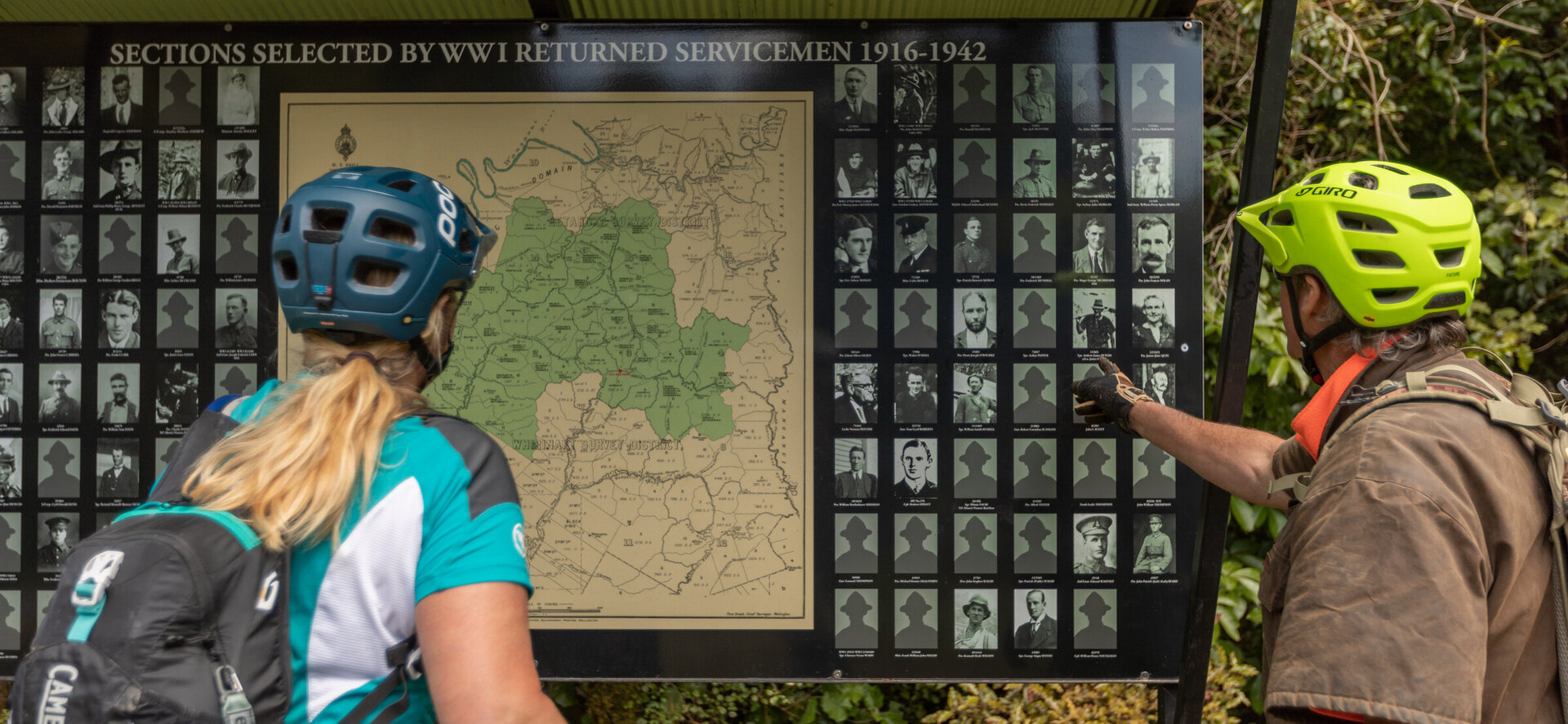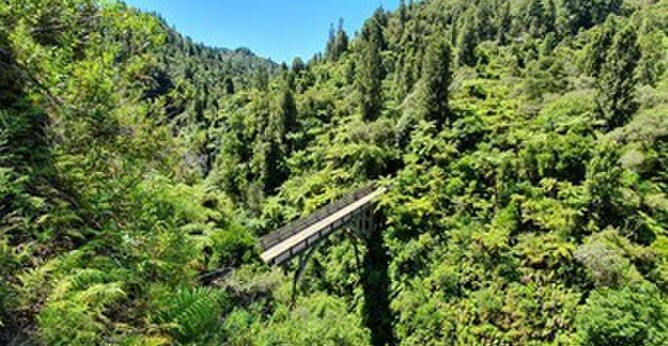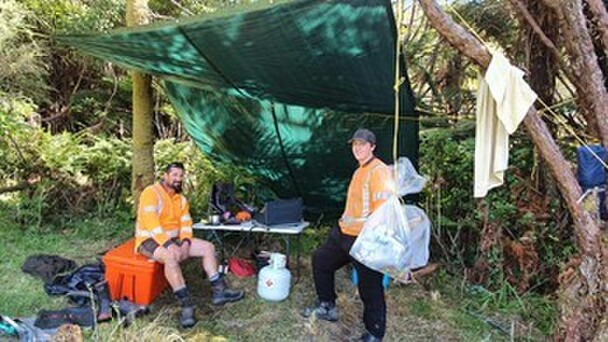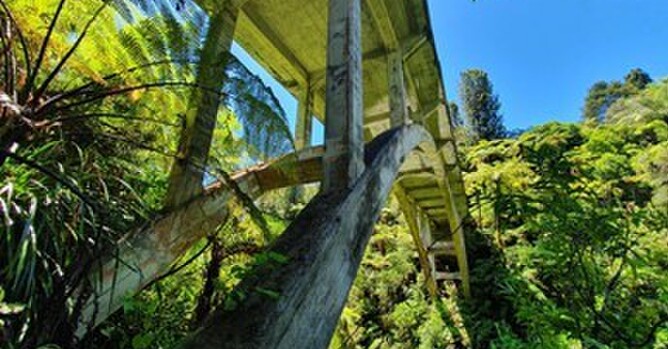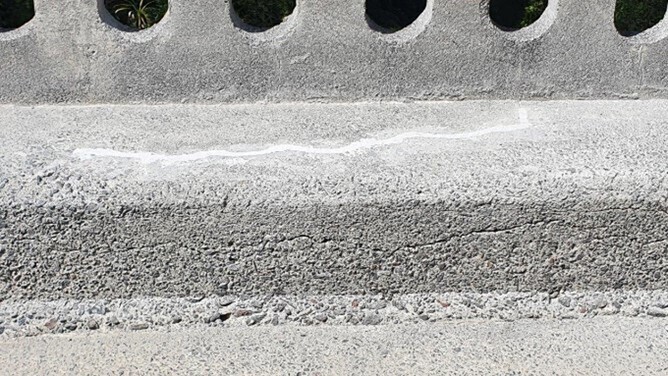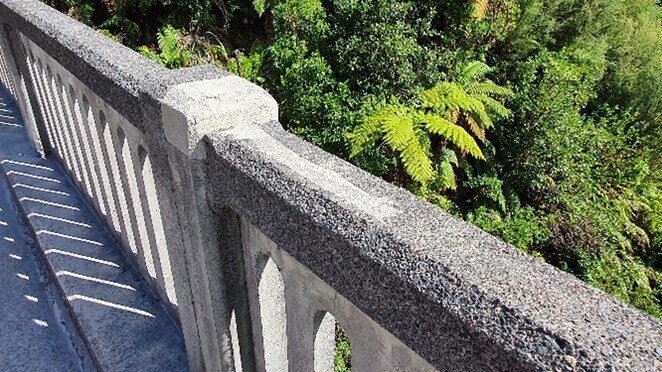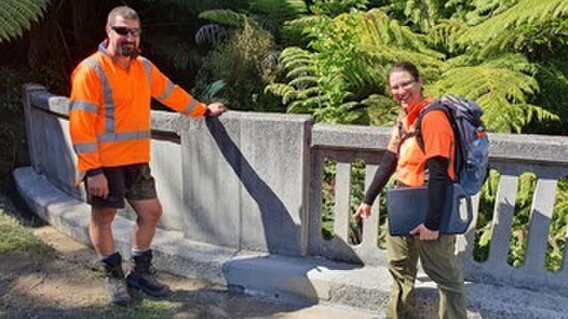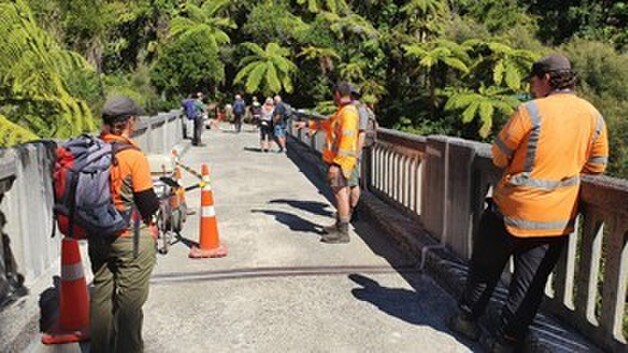Concrete seems really strong and likely to last forever … but it can deteriorate. The large concrete Bridge to Nowhere requires attention to preserve it as a heritage feature long-term. This is like dental work: remove the plaque then find and fill the defects when they are small.
In late March 2021, four-yearly concrete conservation work is in full swing in this remote part of the Whanganui River. A helicopter has whisked two specialist workers onto the site. They set up a bush camp in a sheltered clearing away from the popular tourist track. When we arrived, they had just brewed coffee for lunch so life here is a step above camp food. They already have a gourmet souvenir: last night a juicy young pig walked right into their camp, and he is now hanging around ready for his flight out. An unexpected special feature has been the sounds of kiwi busy at night: it is heartening to know our national birds are hanging on beside a track that has 30,000 people each year.
Most concrete won’t last forever unless it gets help. In 1994 DOC implemented a concrete conservation program at the bridge. The first step was a major inspection that involved abseiling to reach every part. The working height is 40 meters above the stream. The news was good. It showed that back in 1936, despite the extremely remote conditions and dizzy height, the bridge was constructed with a very high standard of work skill. Some core samples of concrete were taken away for chemical analysis. This news was good too. The cement and aggregate were strong and stable. We had an excellent bridge that was worth conserving.
The concrete conservation work is best undertaken on a four-year cycle and this is the 25th year. First up the bridge gets a gentle water blast to brighten it, remove surface moss and better reveal cracks. Cracks are inevitable because the bridge gets hot and cold, and the concrete and steel reinforcing expand at different rates which causes stress. Water can seep into the cracks and rust the steel. If this is not checked, the rust expands a breaks off big chunks of concrete. The process of bridge disintegration begins.
The cracks are drilled out like a dentist and filled with an epoxy grout that is elastic and can absorb a little future movement without cracking again. In some places concrete must be broken out, the rusting steel is treated, and the concrete carefully patched to match the original. Once all this is done the bridge gets two coatings of water proofing. This is a wax that soaks in and minimises the water that penetrates the concrete. All this helps ensure that this historic bridge has a sound future and can give enjoyment to the many visitors that make the journey.
The Bridge to Nowhere is a key part of Whanganui heritage and tourism. DOC manages the bridge as a Heritage Icon Site. It is a memorial to the 41 families of returned World War One soldiers who tried to make a fresh start here, but after a struggle with nature, had to leave. Jet boat operators from Pipiriki and elsewhere guide walkers in here daily. It is a must-do side trip for canoeists paddling down on the three-day Whanganui Journey, as many as 200 a day at the peak. It is part of the adventurous Te Araroa Trail that takes hikers from Cape Reinga to Bluff. And it is the afternoon tea stop for cyclists on the Mountains to the Sea – Ngā Ara Tūhono Cycleway. With all this interest, this long-term preservation work is vitally important.
Thanks to the team who made it happen:
| Jim Campbell | Supervisor Visitor & Heritage |
| Charlotte Fletcher | Works Officer |
| Paul Mahoney | Senior Heritage Advisor |
| David McMillan | Senior Ranger Visitor & Heritage |
| Ranger staff | Whanganui & Pipiriki |
| David Claus | Conspec estimator |
| Ricky Archer | Conspec technician |
| Blake Harding | Conspec technician |
